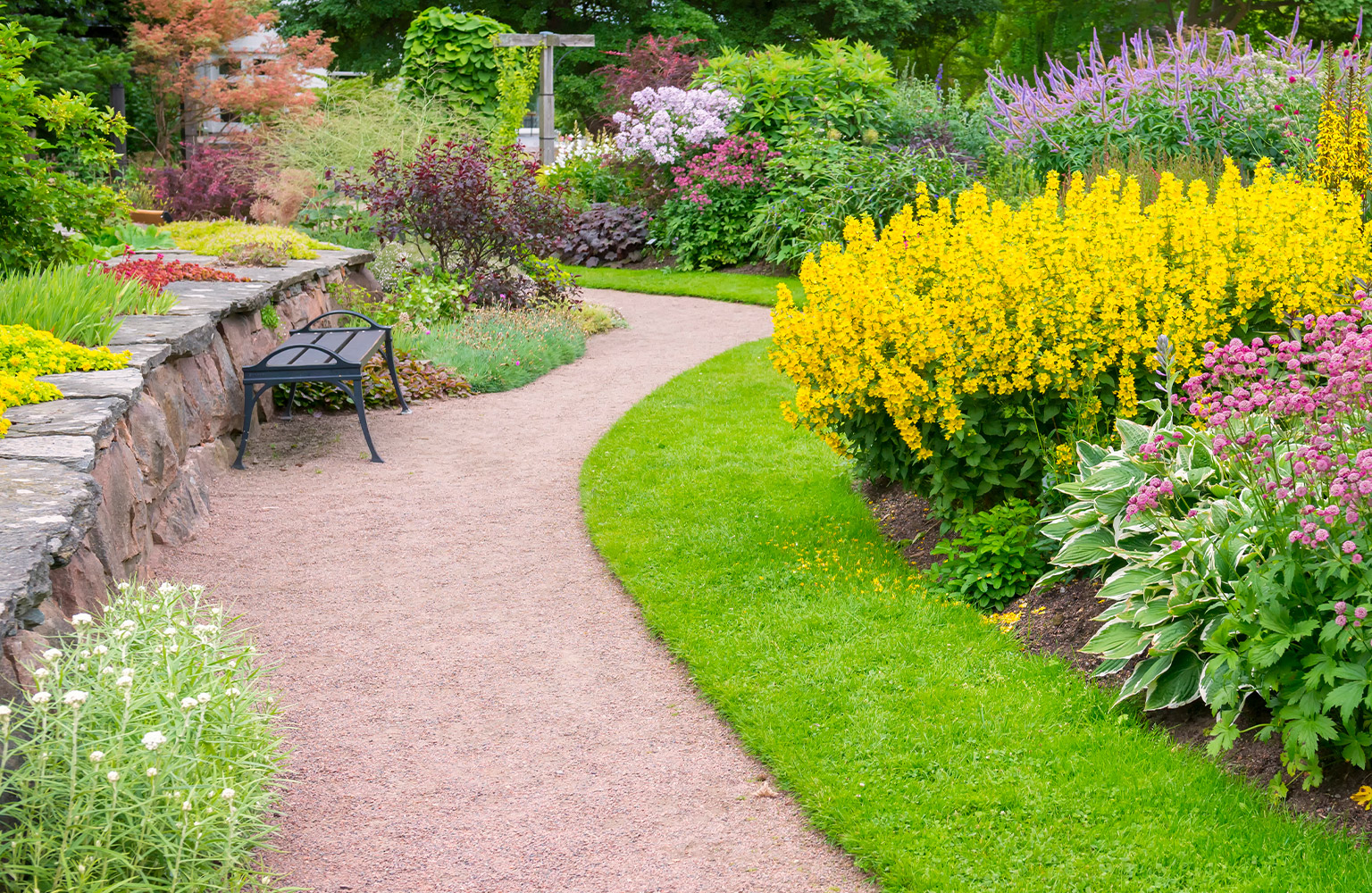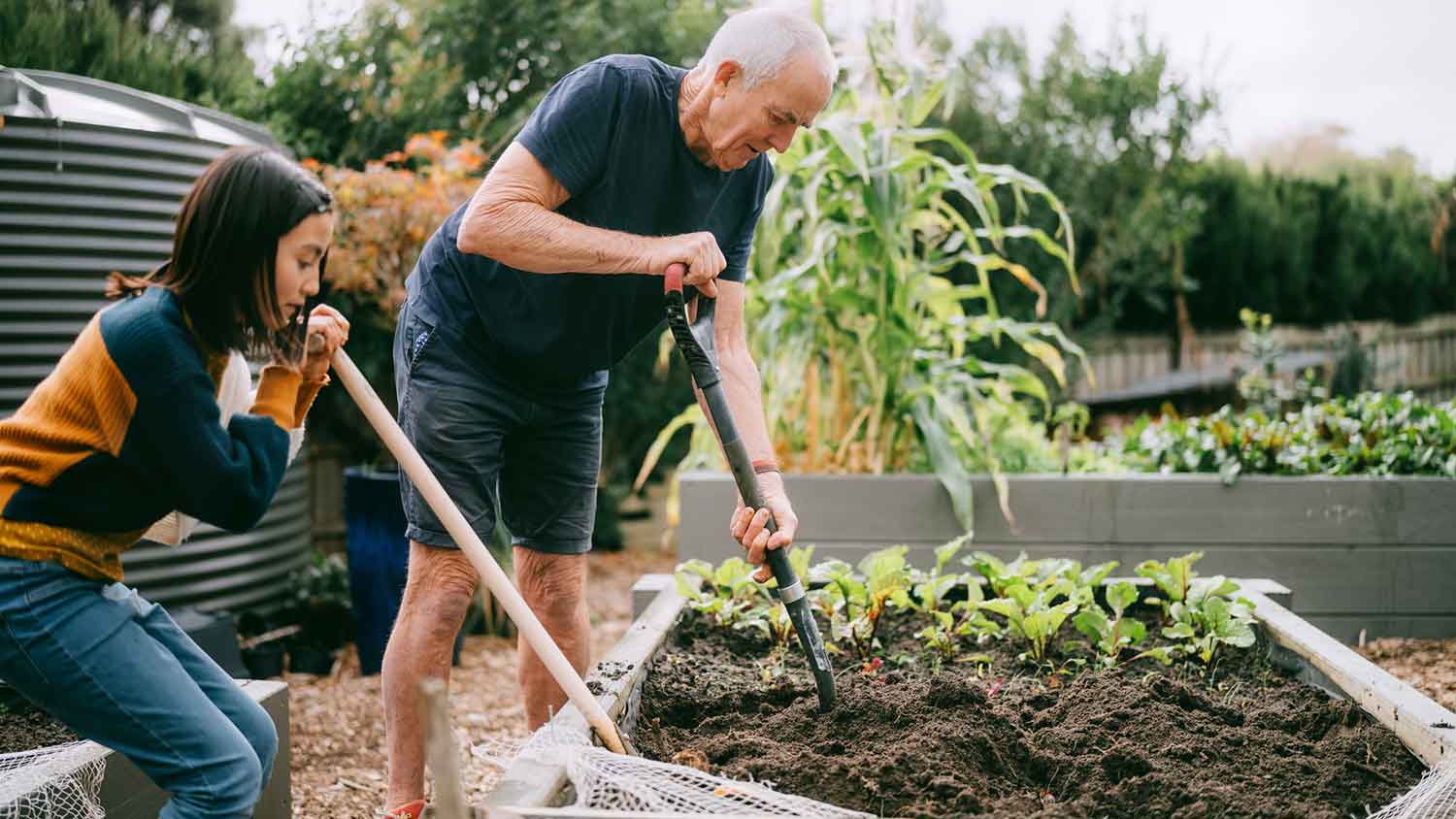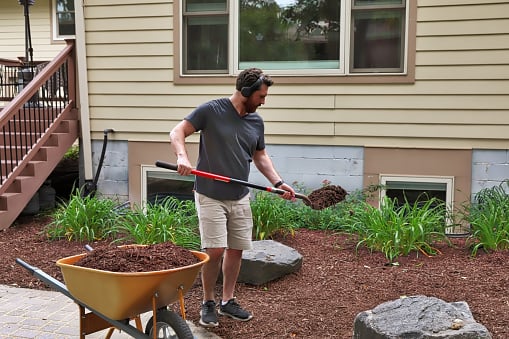
Gravel is an inexpensive paving material overall, but costs vary by type. Find out what average gravel prices will look like for your project.
Recycled rubber mulch has a lot of benefits—but it’s also controversial


Rubber mulch is made from recycled rubber, such as tires.
Some pros are that it’s long-lasting, helps retain moisture, and suppresses weeds.
Rubber mulch cons include being pricey, contaminating the soil, and not providing nutrients.
If you’re shopping for mulching material, you’ll likely come across rubber mulch—a type of mulch made from recycled rubber. Rubber mulch is a long-lasting, practical option, but it has its caveats, too, like the fact that it can contaminate the earth. Here’s a guide to rubber mulch’s pros and cons so you can choose the right mulch for your landscaping.
When taking on this project, expect questions only a pro can answer. With our network of local pros, you'll get the job done and your questions answered—without the hassle and stress of doing it yourself.

Rubber mulch is rubber material that’s typically recycled from scrap tires and made for mulching flower beds, vegetable gardens, and more. It’s made by removing the majority—close to 99.9%—of its steel band, shredding, and then dyeing it. The process results in small pieces of mostly metal-free rubber that can be used as a viable mulching material.
Unlike organic mulches (such as wood), rubber mulch doesn’t decompose, meaning it can stay in place for many years without needing replacement. It’s commonly used in playgrounds and outdoor spaces where durability and low maintenance are key.
| Rubber Mulch Pros | Rubber Mulch Cons |
|---|---|
| Long life span | Higher upfront cost |
| Water-resistant | Highly flammable |
| Repels bugs | Contaminates soil |
| Doesn’t blow away | Difficult to remove |
| Prevents weeds | Risks to health and environment |
| Good insulator | Harbors certain bugs and fungi |
| Cushioning | Doesn’t add organic matter to soil |
Rubber mulch looks similar to wood mulch in its texture. However, it’s also available in a variety of colors for those who want a different look for their landscaping. Along with its unique aesthetic, its longevity, bug resistance, and safety for play areas are some of the main benefits of rubber mulch.
Rubber mulch isn't organic, so it lasts much longer than wood, straw, and leaf alternatives. Some manufacturers claim their rubber mulches can last up to 10 years before you need to replace them. Wood mulch, on the other hand, breaks down completely in four to seven years.
Organic mulches absorb a lot of water, resulting in a hub of fungi, mold, and pathogens. Rubber mulch, on the other hand, isn't absorbent at all. Water simply passes around the mulch and straight into the soil, keeping plants thoroughly hydrated.
One big advantage of rubber mulch is that it doesn't attract many bugs, with one exception (we’ll get to that later). But, in general, if you have serious pest problems and you're trying to avoid ant or termite infestations, rubber mulch can help by not providing them a suitable home.
Rubber mulch is made from ground-up tires and tends to be heavier than its organic counterparts. Therefore, it's not easily blown away by strong winds or swept out of your garden bed in heavy rain. With wood and straw mulches, you can accidentally blow them all over the place just by being a little too enthusiastic with your leaf blower. You won't have this trouble with rubber mulch.
Mulch is primarily used to inhibit weed growth; in this regard, rubber is the all-star. The heavy and dense material blocks light and compresses the soil surface, discouraging weeds from germinating or pushing up new growth. Plus, it does not hold water, making it unlikely for weed seeds to germinate and take root in your soil.
Well-known for its insulating properties, rubber can keep your soil warmer for longer. This can extend plant growth and warm the earth earlier for a significantly increased growing season. Plus, you'll get flowers that will keep flowering later into the fall as the soil retains its heat, thanks to the rubber mulch blanket.
Unlike wood mulch, rubber mulch provides a cushioned surface with shock-absorbing properties. It can reduce the risk of injury from falling on it—plus, it’s free from splinters. That makes rubber mulch a potential option for areas where children are active, like backyard playgrounds, to prevent bruises.
Rubber mulch has a few downsides, including its high initial cost, flammability, and potential harm to humans or the environment. Here are the possible problems you could run into with rubber mulch.
Rubber mulch is fairly expensive initially compared to other mulches, at approximately $120 per cubic yard. For comparison, pine bark mulch costs around $30 per cubic yard. However, unlike organic mulches, rubber mulch can last up to 10 years, saving you on what you’d spend to regularly replace wood mulch.
Despite some manufacturer's claims, rubber mulch is flammable. In a test by Consumer Reports, rubber mulch burned faster and more severely than wood mulch when it came into contact with a lit match. Rubber fire spreads faster and is more challenging to extinguish because of its comparatively high carbon-to-nitrogen ratio. Therefore, if you live in an area of elevated fire risk, avoid rubber mulch and opt for an organic mulch that's more difficult to ignite and slower to spread.
Because it's inorganic and takes many years to break down properly, rubber mulch must be kept separate from the soil. You’ll need to add a layer of hard-wearing landscaping fabric between the two layers.
Suppose the landscaping fabric splits or you make the mistake of foregoing the barrier layer, letting the rubber mulch and soil mix. In that case, you may need to hire a local landscaper to remove the entire top layer of soil. This way, you can get rid of all the rubber. Also, note that this means you cannot till anywhere you've laid rubber mulch, as you cannot work it into the soil. This makes cultivation and weeding much more challenging.
Rubber from tires contains many chemicals and heavy metals, even if it’s undergone extensive cleaning and preparation processes. Aluminum, zinc, cadmium, chromium, and more can all leach into the earth as the rubber breaks down, contaminating your soil.
According to a study published in the National Library of Medicine, heavy metals are linked to serious health conditions in humans and animals, including cancers and neurological conditions. And the contamination isn't localized, either. Yes, your soil can suffer, but the heavy metals eventually leech into the groundwater, causing widespread contamination.
Because of the risk of chemical and heavy metal contamination, you should not grow anything you plan to eat in soil that has—or had—rubber mulch applied, as the contaminants can end up in your produce.
In mulch form, recycled rubber releases volatile organic compounds, or VOCs. According to the American Lung Association, these gaseous compounds are dangerous if inhaled and can lead to long-term health complications, ranging from nausea and dizziness to kidney, liver, and neurological damage. VOCs increase as the rubber warms up, making the mulch undesirable for hot climates.
Rubber mulch is great at blocking weeds, but if it's applied too thickly, it can also kill other plants by preventing water and nutrients from reaching the soil.
Also, chemicals added to rubber can leach into the soil, harming your plants, damaging soil health, and unbalancing your garden's micro-ecosystem.
While rubber mulch is not attractive to most pests, a study published in the National Library of Medicine found that it's the favorite mulch of Asian cockroach mommies and their babies. So, if your area is prone to these pests, offering them a five-star hotel in your backyard is not advised.
For the most part, rubber isn't susceptible to molds and fungi because it's inorganic and doesn't absorb water. The exception is for brown rot and white rot fungus species that attack the mulch’s chemical additives.
Even though rubber eventually breaks into smaller particles, it doesn't add organic matter to your soil. In fact, as you've already seen, it's a costly issue to fix if rubber mulch does get into your soil.
Organic mulches break down quickly and add fibrous matter and valuable nutrients to the soil, replenishing the quantity and quality of your topsoil. Organic mulch is also easy to till into the soil, improving drainage and soil structure quickly and easily.
Whether rubber mulch is right for you will depend on your needs. If insulation or bugs are an issue, for example, rubber mulch offers a helpful solution.
However, consider whether the cost, health, and environmental implications outweigh the benefits. Consider which of these factors are most important to you and compare them across rubber and wood mulch:
| Factor | Rubber Mulch | Wood Mulch |
|---|---|---|
| Cost | More expensive upfront but saves on long-term costs | Less expensive initially but needs to be replaced more often |
| Life span | Up to 10 years | 4–7 years |
| Appearance | Variety of colors and textures that retain over time | Natural appearance, may fade over time |
| Maintenance | Doesn’t decompose or attract pests, but harder to remove | Requires regular raking and replenishing |
| Environmental Impact | Contaminates soil and harms plants | Natural and biodegradable |
| Water Retention | Doesn’t absorb water | Absorbs water, causing deterioration and mold growth |
| Safety | Cushions against falls, but flammable and can produce unhealthy VOCs | Less cushioning and may have splinters, but non-contaminant |
If in doubt, contact a local mulch delivery company to find out which type of mulch would be best for your garden and how much mulch you need.
For safer mulch alternatives, try organic mulches made from chopped bark, conifer needles, lawn clippings, or straw.
From average costs to expert advice, get all the answers you need to get your job done.

Gravel is an inexpensive paving material overall, but costs vary by type. Find out what average gravel prices will look like for your project.

Find out how much a soil test costs and what you get for your money with our expert guide. Know what to budget for different types of soil tests.

Discover the average sand delivery cost, key price factors, and tips to save on your next project. Get transparent, up-to-date estimates for sand delivery.

If you’re planning a garden and asking yourself, “How many yards of dirt do I need?” this dirt calculator will help you do the math to find the right number.

Different types of mulch have different uses in your landscaping. Learn which mulch types are best to use on your property.

If you’re looking at your yard wondering, “How many bags of mulch do I need?” This calculator will help you determine the exact amount of mulch you should buy.